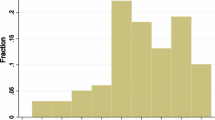Summary
This study is of interest for a number of reasons. The first relates to the measures used to assess teacher behaviour and the comprehensive procedures followed to establish reliability. The second is associated with the large sample size which represents nearly the entire population. The third is concerned with the overall lack of relationship between teacher behaviours and growth in science achievement that is apparent from this secondary analysis. Although the first two of these features are relatively uncommon to research studies in the field of teacher effectiveness using observers, the last is far from unique. The lack of relationships between observed low inference teacher behaviour and student gain in achievement on cognitive outcomes has been noted frequently in reviews of the literature (one of the latest being, Rosenshine, 1978). It is, of course, possible to discuss the overall lack of relationship between teacher and student behaviour and science achievement gain as a consequence of unreliabilities of measurement of the independent and dependent variables. It is possible to take a more optimistic view and observe that the data reported here were collected in Canberra in 1969. The prevalence of streaming would have resulted in certain teaching behaviour being more highly correlated with both pre-test and post-test scores than would be found if streaming had not been present. In addition, the homogeneity of teaching behaviour imposed by an inspectorial system would have reduced the variance in the independent variables. Hopefully, a replication today would be more likely to identify effective teaching behaviour. However, one thing appears evident. Any investigation that does not exceed the one reported above in establishing the reliability and stability of its measures, or in the extent and scope of the study, is not likely to produce findings of greater strength than have been presented in this paper.
Similar content being viewed by others
References
ANTHONY, B.C.M. The identification and measurement of classroom environment process variables related to academic achievement. Unpublished Doctoral Dissertation, University of Chicago, 1967.
ARMSTRONG, J.R., VERE DE VAULT, M. & LARSON, E. Consistency of teacher communication: A sampling problem in interaction analysis.Psychology in the schools, 1967, 4(1), 74–76.
KEEVES, J.P. The home, the school and educational achievement. Unpublished Doctoral Dissertation, Australian National University, 1971.
KEEVES, J.P.The effects of the conditions of learning in the schools on educational achievement. IEA (Australia) Report 1974: 2. Hawthorn, Victoria: ACER, 1974.
MEDLEY, D.M. & MITZEL, H.E. Measuring classroom behaviour by systematic observations. In N.L. Gage (ed.).Handbook of research on teaching. Chicago: Rand McNally, 1963.
ROSENSHINE, B.V. Academic engaged time, content covered, and direct instruction. ERIC. ED 152776, 1978.
ROWLEY, G.L.. The relationship of reliability in classroom research to the amount of observation. An extension of the Spearman Brown formula.Journal of Educational Measurement, 1978, 15(3), 165–180.
RUTTER, M., MAUGHAN, B., MORHMORE, P., & OUSTON, J..Fifteen thousand hours. London: Open Books, 1979.
Rights and permissions
About this article
Cite this article
Lewis, R., Keeves, J.P. Teaching behaviour and science achievement. Research in Science Education 9, 15–22 (1979). https://doi.org/10.1007/BF02359139
Issue Date:
DOI: https://doi.org/10.1007/BF02359139




